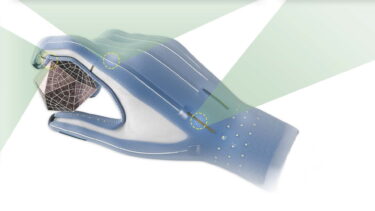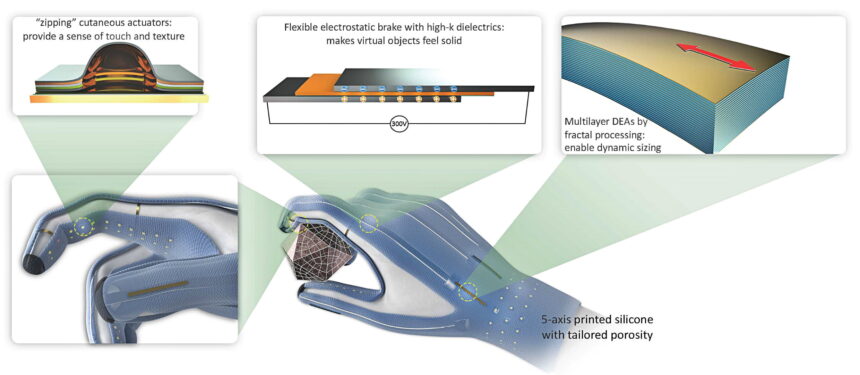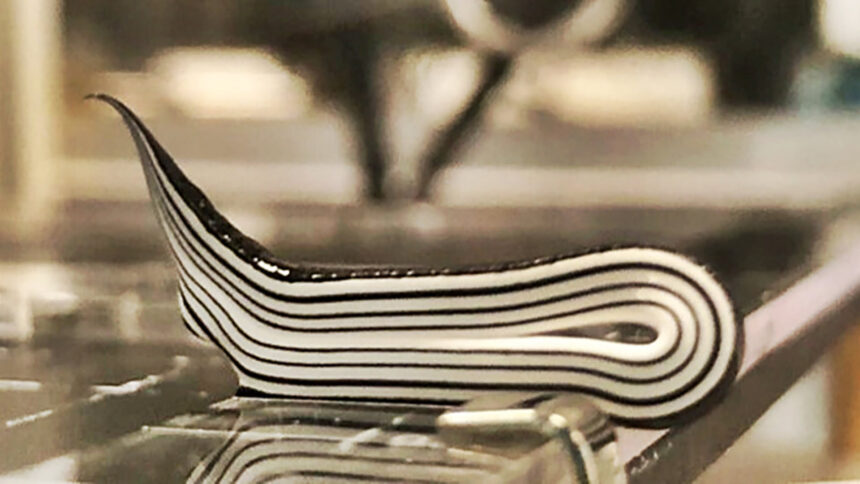Researchers aim to 3D print a haptic VR glove with artificial muscles

Image: Herbert Shea, EPFL
Der Artikel kann nur mit aktiviertem JavaScript dargestellt werden. Bitte aktiviere JavaScript in deinem Browser und lade die Seite neu.
Researchers are currently working on a 3D-printed VR glove with artificial muscles. The team is aiming to be the world’s first to print a haptic VR gloves.
ETH Zurich and Swiss Federal Laboratories for Materials Testing and Research, (Empa), are collaborating in research on a virtual reality glove. The glove will be made largely using 3D printing, and can be customized to the user’s specifications.
Swiss researchers plan to create a virtual reality glove for haptic use
In a four-year project called “Manufhaptics,” the researchers aim to produce a haptic glove that makes virtual worlds tangible. Manufhaptics will not be like current VR gloves such the Manus Metaglove. Instead, it will be made from entirely new materials. All components will be 3D printed automatically, which is why this change is important.
Researchers plan to incorporate three types of actuators in the glove to make virtual surfaces tangible and objects tangible. They plan to make nubs on the fingertips that imitate the surface texture, making it tactile.

The hydraulically reinforced electrostatic actuators, which are millimeters in size, provide the sensation of touch. | Image: Empa
To achieve this, electrostatic brakes can be attached to the finger joints to stiffen and block the joint. This is to imitate large, solid objects that produce resistance when touched.
As a third type, dielectric elastic actuators are available. They attach to the back of your hand and tighten the glove’s outer skin so it fits perfectly. They can also be used on the surface of your hand to apply pressure.
New materials are being developed for the VR glove.
“These elastic polymers react to electric fields and contract, like a muscle,” explains Dorina Opris, head of the research group. “But they can also serve as a sensor, absorbing an external force and generating an electrical impulse from it. We’re also thinking of using them to generate energy locally. Electricity can thus be generated everywhere from movement.”

The consistency of the electroactive polymer is comparable to hand cream. A 3D printer could be used to create artificial muscles. | Image: Empa
The artificial muscles, electroactive polymers, and current-conducting alternate layers can be layered on top of one another up to 1,000 times using 3D-printed fine layers. These inks must be of the correct consistency to allow 3D printing.
“It should come out of the printer easily and then remain dimensionally stable on the substrate,” says Empa researcher Patrick Danner. Material properties should be similar to a hand cream.
Tazio Plji of ETH Zurich has already succeeded in processing the material into several layers with his 3D Printer. They are far from the 1,000 layers they want. Pleji states that so far there are only about ten layers. The artificial muscle isn’t working well. The researchers are optimistic that they will be first to create a VR glove using a 3D printer.
Note: Affiliate links can link to online shops in articles. MIXED gets a commission from the service provider if you make a purchase via this link. The price of your order does not change.